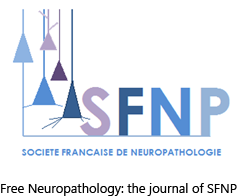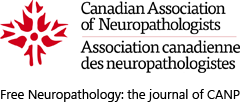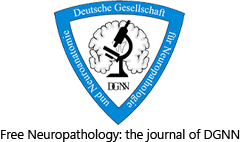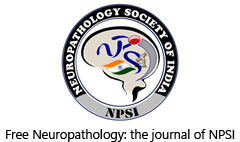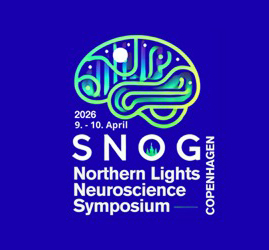Taylor’s focal cortical dysplasia revisited: History, original specimens and impact
DOI:
https://doi.org/10.17879/freeneuropathology-2021-3324Keywords:
Dysplasia, Epilepsy, History, Taylor, FCDAbstract
50 years ago back in 1971, David C. Taylor and colleagues from England reported on a small series of surgical epilepsy cases proposing a new type of tissue lesion as a cause of difficult-to-treat focal epilepsy: a localized malformation of cerebral cortex. The lesion is now known as focal cortical dysplasia (FCD) Type II or Taylor’s cortical dysplasia. FCD II is not rare, and today is a frequent finding in neurosurgical epilepsy specimens. Medical progress has been achieved in that the majority of FCD II is diagnosed non-invasively by magnetic resonance imaging today. Detailed studies on FCD revealed that the lesion belongs to a spectrum of mTOR-o-pathies, thereby confirming the authors´ initial hypothesis of a relationship to tuberous sclerosis. Here, selected original materials from Taylor´s series are presented as virtual slides, supplemented by original clinical records, in order to give a first-hand impression of this milestone finding in neuropathology of epilepsy.
Metrics
Additional Files
Published
How to Cite
Issue
Section
License
Copyright (c) 2021 Burkhard S. Kasper

This work is licensed under a Creative Commons Attribution 4.0 International License.
Papers are published open access under the Creative Commons BY 4.0 license. This license lets others distribute, remix, adapt, and build upon your work, even commercially, as long as they credit you for the original creation. Data included in the article are made available under the CC0 1.0 Public Domain Dedication waiver, unless otherwise stated, meaning that all copyrights are waived.








